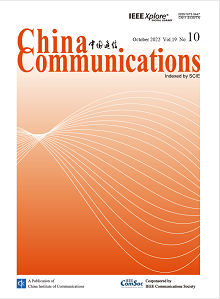EMERGING TECHNOLOGIES & APPLICATIONS
Xiaoxiao Zhuo, Hong Yang, Meiyan Liu, Yan Wei, Guanding Yu, Fengzhong Qu
2022, 19(10): 220-237.
With the increasing demand for marine exploration, underwater acoustic sensor networks (UASNs) are prone to have the characteristics of large-scale, long term monitoring, and high data traffic load. Underwater media access control (MAC) protocols, which allow multiple users to share the common medium fairly and efficiently, are essential for the performance of UASNs. However, the design of MAC protocols is confronted with the challenges of spatial unfairness, data eruption, and low energy efficiency. In this paper, we propose a novel data concurrent transmission (DCT) MAC protocol, which is able to exploit long propagation delay and conduct concurrent transmission. Specifically, we present the theoretical performance analysis of the proposed MAC protocol in detail and give an analytical solution of the success concurrent transmission probability between nodes. In addition, simulation results are provided to demonstrate that our proposed protocol is appropriate for UASNs and can significantly improve the performance in terms of network throughput and energy consumption. Finally, we give some typical future applications of UASNs and discuss the demands on MAC protocol design.
